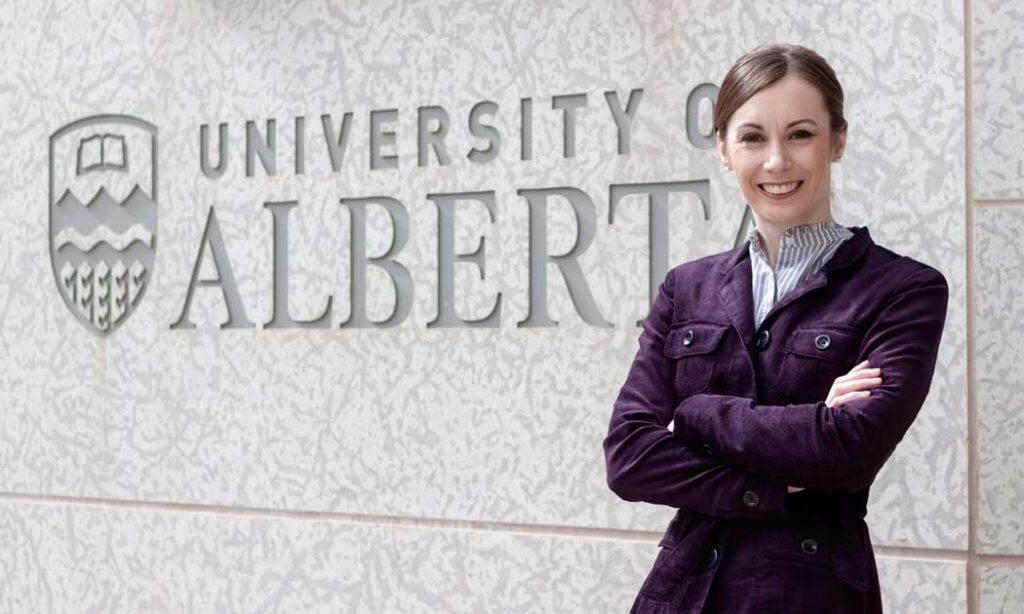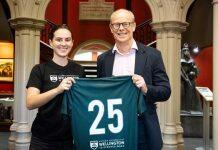

It was in junior high school that Heather Brown first felt truly different. It can be a tough age for anyone, but she was convinced that “nothing about me was likable. I was a geek with no social life.
“I started realizing I was different, but I didn’t know why,” says the professor of educational psychology at the University of Alberta.
She possessed strong opinions, a characteristic commonly found among individuals on the autism spectrum, and showed little patience for those she deemed incompetent or unethical. She also had aversions to certain foods and sensitivities to specific noises and lights.
But she could also be remarkably focused. As a young girl she could often predict the resolution of Nancy Drew mysteries as early as page two.
Brown assumed her lack of social connection was her fault, and her fault alone — an assumption that has been mirrored in prevailing theories of autism but is now being challenged.
“I internalized the belief that others hated me because I didn’t know how to behave, how to act or how to be a good friend,” she says.
By the age of 13, she was diagnosed with anxiety, depression and an eating disorder. But it was hardly liberating. None of that got to the root cause of her alienation.
“I was always told that I’m just being overly sensitive, to just get over it.”
Learning to embrace neurodiversity
It wasn’t until Brown was in her 30s that she was finally diagnosed with autism spectrum disorder, a conceptualization of autism that is now considered problematic because it implies autistic people are broken. But this time, the diagnosis did bring some relief. Her experiences were “normal,” just normal for an autistic person.
She learned the idea of a normal brain is a myth, and that hers was simply wired differently.
“When I experience certain sensations as painful — for example, sensitivity to tastes, textures, sound and light — I am actually experiencing pain. Researchers have shown that if you put my brain under an MRI and expose me to unpleasant sensation, the same pain regions will light up as if I was actually being hurt.”
“Do you know how liberating that is, to know it’s not something you’re supposed to just be able to tolerate and get over?”
Far from getting over it, Brown now embraces her identity wholeheartedly, rejecting the “pathology paradigm” in favour of accepting neurodiversity.
“Now, as a professor and researcher, I can apply my passionate interests to identify the strengths young autistic students have and to develop appropriate academic interventions in hopes of building on those strengths so they can thrive throughout their lives,” she wrote in a 2019 Folio commentary.
A vision for change
Through the Autism, Neurodiversity & Academic Achievement (AIDAN) Lab in the Faculty of Education, she and her colleagues work to improve conditions in the education system for those with autism, looking for ways to accommodate neurodivergence rather than forcing them to adapt. Brown’s mission is to help youth and adults with autism “thrive both at school and in the greater community.”
The lab’s approach is rooted in a community-based participatory model, in which community participants have direct input into the research and decision-making.
However, her work moves beyond the traditional research model. “We call it emancipatory participatory research because we work with autistic members of the community who have historically been given less opportunity and experienced more systemic disadvantages.
“Since they are invited to participate as co-researchers and members of the research team, having their contributions valued and their recommendations enacted allows the adults to see their own gifts more clearly and feel more confident in their abilities.”
Community members reported gaining “a sense of fulfilment from contributing to something important to both academia and society as a whole,” Brown adds.
She is currently working with a group of post-secondary students with autism, seeking their impressions of what needs to change in their training and what questions she should ask participants to target specific barriers, she says.
Her vision for change is grounded in what’s called an “interactionist” model that emphasizes the importance of identifying and addressing barriers preventing full participation and inclusion of people with disabilities — whether those barriers are physical, attitudinal or institutional. With research partner Sandy Hodgetts in the Faculty of Rehabilitation Medicine, Brown is running a three-year project with Edmonton Catholic Schools, aimed at implementing an educational approach that will enhance engagement and inclusion of autistic students.
“We’re basically looking at trying to improve the non-autistic peers’ understanding of autism,” says Brown. “Through engaging activities and thought-provoking discussions, we strive to foster a profound understanding, nurture a deep-seated appreciation and instil genuine empathy within students who are not on the autism spectrum.
“Then we track what happens to the sense of belonging for those kids with autism over time,” she adds, noting that the approach includes broader elements that could help improve inclusion for other marginalized groups as well.
Brown was also asked to join a project called the Autism Intervention Network on Physical Health at UCLA, bringing together leading autism researchers to mentor autistic researchers in grad school or in their early careers.
With the passage of Bill S-203 in Canada last March — establishing a National Autism Strategy described as a federal framework to “support autistic Canadians, their families and caregivers” — Brown’s advocacy and expertise are in demand more than ever.
It’s an exhausting process, she admits, but the gratitude expressed for her dedication is palpable.
“When I go to give yet another talk where I talk about living with autism, I often receive emails from other autistic people expressing appreciation because I’m in the privileged position to give a voice to our shared autistic experiences,” she says.
“Over and over, I say, ‘This is how weird I am, this is how vulnerable I am. This is how many things have gone wrong in my life. And now I want you to learn from it.’”







































